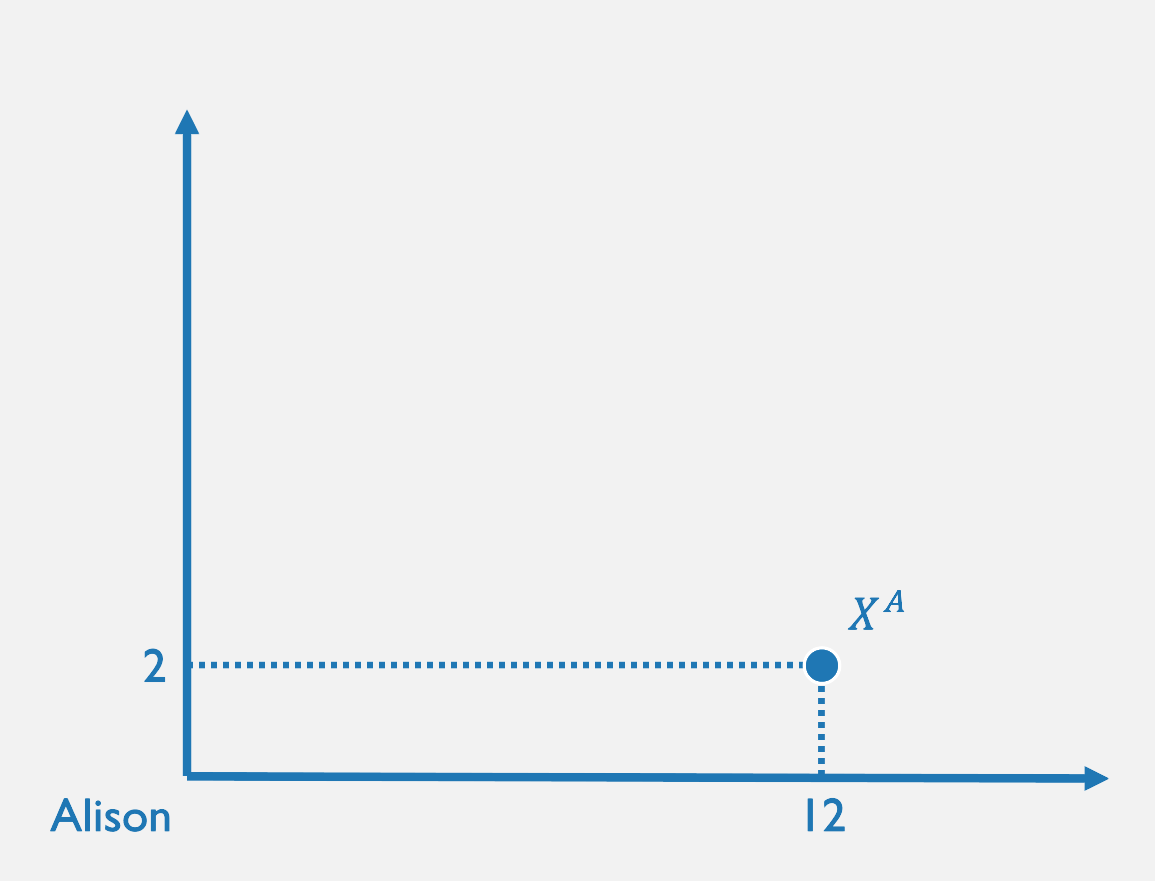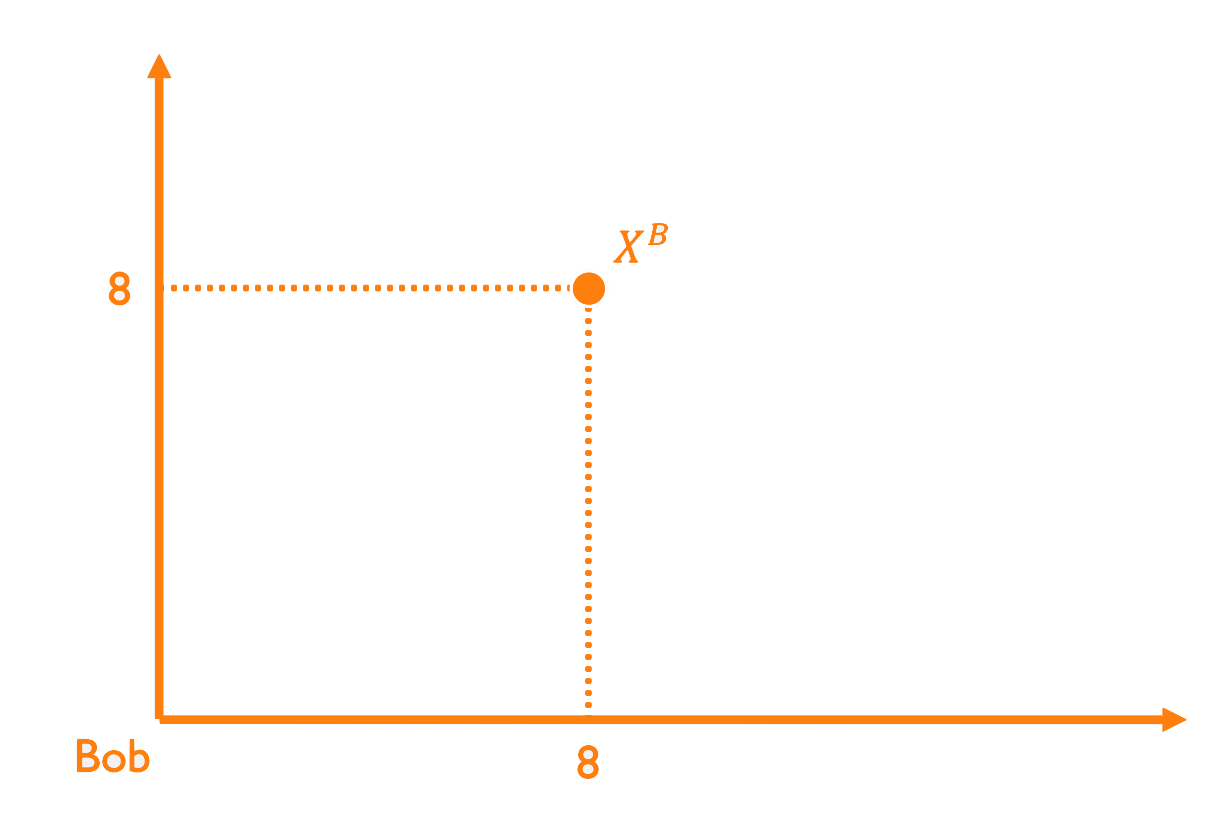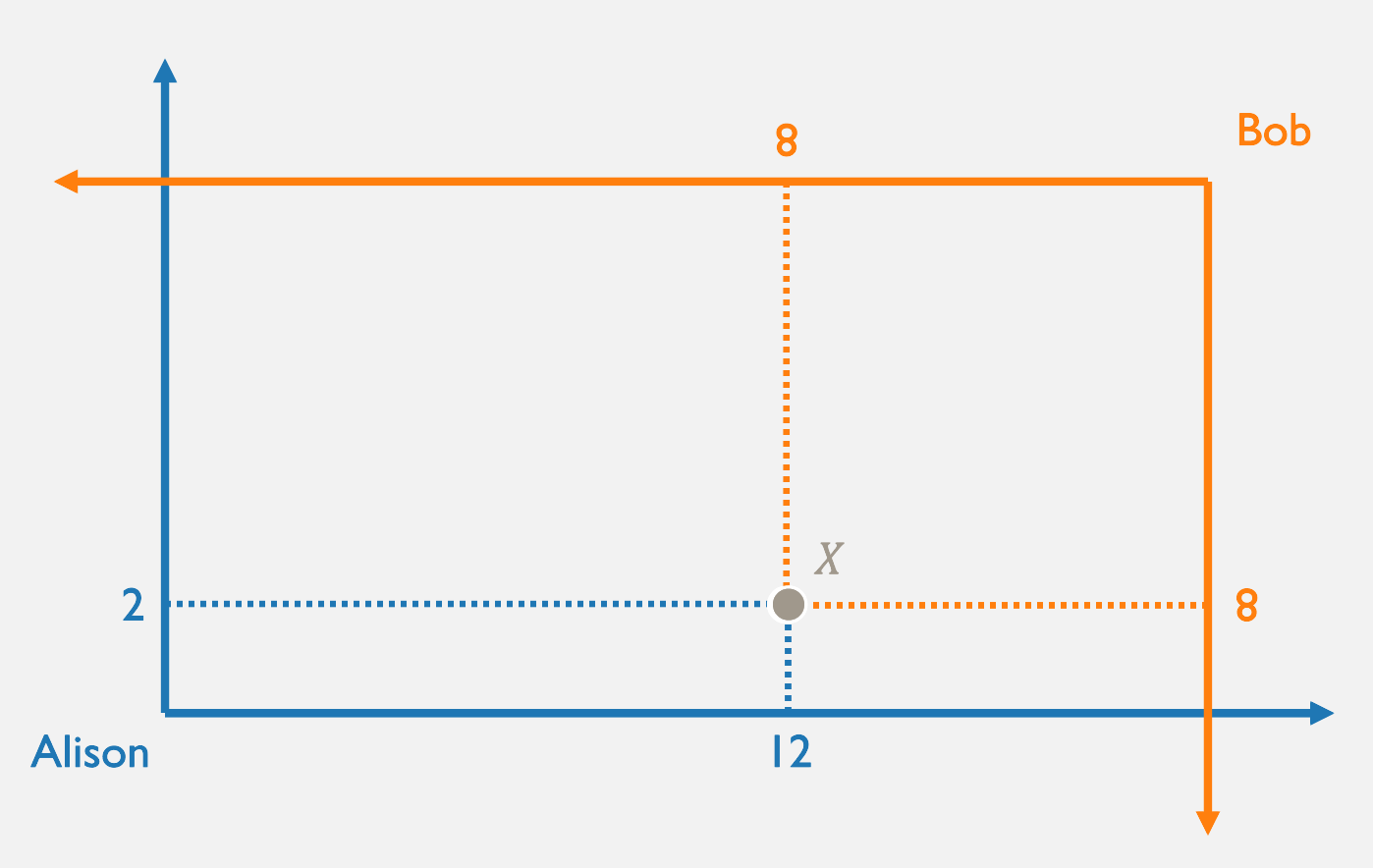Efficiency and Equity in the Edgeworth Box
Christopher Makler
Stanford University Department of Economics
Econ 51: Lecture 5
Today's Agenda
- From bundles to allocations
- Preferences over allocations
- Pareto efficiency and the "Contract Curve"
- Equity
From Bundles to Allocations
- A bundle is a vector of goods
consumed by an individual agent. - An allocation is a vector of bundles
consumed by multiple agents.
From Bundles to Allocations



From Bundles to Allocations



From Bundles to Allocations




Preferences in the Edgeworth Box
- Recall: an indifference curve divides the choice space into a "preferred set" and a "dispreferred set"
- How do Alison and Bob feel about different potential allocations in the Edgeworth Box?




pollev.com/chrismakler

Alison proposes trading 4 units of her good 1 for 2 units of Bob's good 2. Does this make both of them better off? One better off, and one worse off? Both worse off?

Alison proposes trading 4 units of her good 1 for 2 units of Bob's good 2. Does this make both of them better off? One better off, and one worse off? Both worse off?
Initial Endowment
Utility at Initial Endowment
After Trade
Utility After Trade
Bob
Alison
Preferences in the Edgeworth Box
What does the "lens" of overlap represent?
How is the existence of this lens related to
the agents' marginal rate of substitution (MRS) at point \(X\)?
Pareto Improvements and Pareto Efficiency
A reallocation that makes at least one person strictly better off and makes nobody strictly worse off is called a Pareto improvement.
An allocation from which
there is a possible Pareto improvement is called a
Pareto inefficient allocation.
An allocation from which
there is no possible Pareto improvement is called a
Pareto efficient allocation.
pollev.com/chrismakler

Suppose A and B each earn
$100 this week and next week.
Application:
Borrowing and Lending
What are the dimensions of the Edgeworth Box?
Furthermore, suppose A is
less patient than B.
What does that imply about the lens of potential Pareto improvements?
What does a Pareto improvement
look like in this case?

Suppose A and B each have $250.
Application:
Betting
They are considering betting on whether the Eagles make it to the Super Bowl (state of the world 1) or not (state of the world 2).

They are both risk averse, but B thinks the Eagles have a better chance than A does.



Pareto Efficiency and the Contract Curve
- At allocations like bundle Y, you cannot make Alison better off without making Bob worse off, or vice versa.
- We call allocations where this is true Pareto efficient.
- The set of all Pareto efficient allocations is called the contract curve.
Pareto Efficiency and the Contract Curve
The parameters \(a\) and \(b\) represent how much A and B like good 1, respectively:
Pareto Efficiency and the Contract Curve
It's not always the case that the contract curve occurs
at the set of points where their MRS's are equal...
Equity
- Efficiency is not the only measure of
how "good" an allocation is. - Can we have social preferences,
based on an ethical philosophy,
over allocations in the Edgeworth Box? - What if the agents themselves care about
more than their own individual consumption?
Equity
- Approach: take "utils" (somewhat) seriously, and plot the possible combinations of utility attainable within the Edgeworth box


Altruism
Suppose two people are altruistic:
they care about the other's consumption
as well as their own.
The contract curve will not go through
the end corners in which
one of them gets nothing!
Source: Bowles & Halliday
Summary
- Introduced the Edgeworth Box framework
- Investigated two ways to evaluate an allocation:
is it efficient, and is it equitable? - Key concept: Pareto efficiency. Is there a win-win?
- Next time: the efficiency of competitive markets
(if not necessarily equitability)